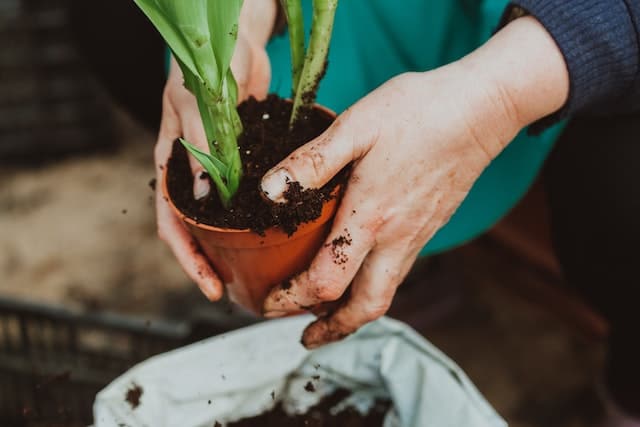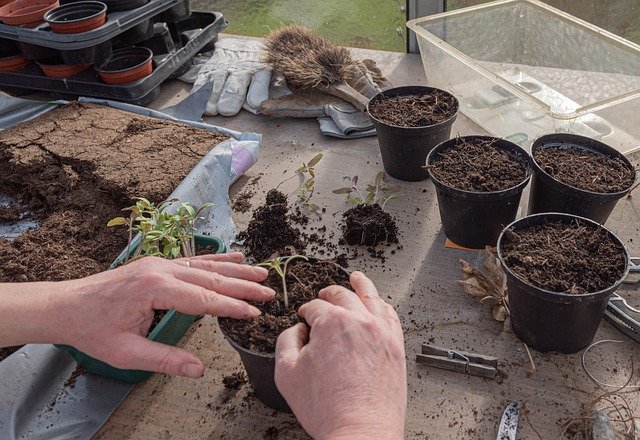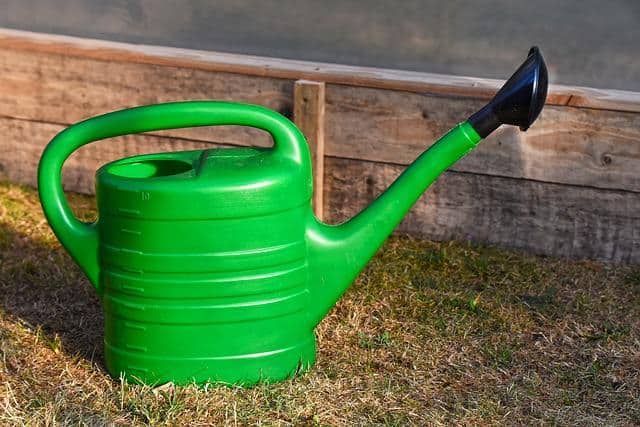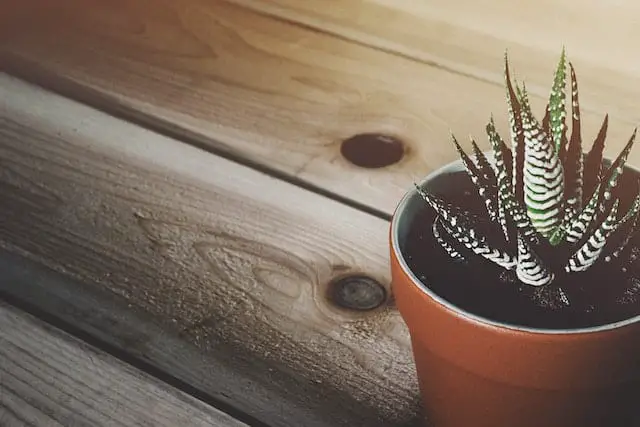Zebra cactus (Haworthia) are such unusual, eye-catching plants that add a cool dimension to even the best succulent garden. They are generally easy to care for, though a dying zebra cactus needs a little TLC.
How Do I Save A Dying Zebra Cactus?

Let soggy roots dry out, then remove the plant from the pot and trim any rotten roots. Repot in succulent or cactus soil in a pot with good drainage. Make sure your Zebra Cactus is in bright light but not intense, direct sun.
If you notice your zebra cactus’s leaves turning yellow, brown, or white, this indicates that the plant is stressed. Figure out the cause asap so you can keep your plant healthy and vibrant.
1. Don’t Overwater
The most common reason succulents die is overwatering. Cacti grow in desert-like conditions, and need infrequent watering. If you are watering them along with your other houseplants that grow in regular potting soil, you may be watering too much.
If your Haworthia has yellow or brown leaves, or soft, rotting roots, you are overwatering.
Only water a zebra cactus when the soil is dry ⅔ of the way down. Depending on your climate and the amount of light it is getting, this may be as little as once a month in summer and every other month in winter. Plants growing in more light will need more water than those growing in low light (or winter light).
When you water, soak the plant completely and let the water drain out of drainage holes. You can completely saturate it each time you water, just make sure the soil dries out between watering.
2. Trim the Roots
If you suspect you have overwatered your plant, take it out of the pot and inspect the roots. Trim any that are black, brown or mushy. Leave only white, supple roots.
3. How to Repot Your Zebra Cactus

Once you have trimmed off any dead roots, you will need to repot. If your cactus had a lot of dead roots (root rot) you should use a fresh pot or wash your old pot with hot, soapy water to kill any lingering bacteria.
If your plant is outgrowing its pot, you can repot in a new pot one size (one inch or so) larger than the old pot.
After you repot your cactus, put it in bright light (out of direct sun) to rest for a day or so, or return it to its regular spot if it isn’t too sunny. You can water your plant right away, though if your plant was very soggy you may want to wait a day or so.
Regularly repot your zebra cactus every 3-5 years in fresh cactus soil for best results. If your plant is growing too big for its pot, you can divide your plant and repot into smaller pots. Make sure you get some leaves and roots in each sample you want to propagate.
4. Use Cactus or Succulent Soil

Cactus require sandy soil with excellent drainage. They are used to growing in nutrient-poor soil that doesn’t retain much water. You can use over the counter cactus or succulent mix, or make your own with one third potting soil, one third coarse sand, and one third pumice or perlite.
Learn more: Can You Use Cactus Soil for Other Plants?
5. Make Sure Your Pot Has Drainage!
Succulents and cacti are great at sucking up all the water they can out of their environment, but the roots are not designed to sit in damp conditions.
Your pot should have at least one drainage hole, or more for a larger pot.
If you are tempted to overwater your succulents, choose a terracotta pot so the excess water can dry out more readily in-between waterings.
It is crucial that water can drain out of your pot, so if your plant is sitting in a dish of water, your soil will be too damp and your roots will get soggy and rot. Watering from a dish below is not a good method for succulents or cactus.
6. Don’t Underwater

If your Haworthia has brown leaf tips or the tiny leaves near the soil are brown, this might mean that you are underwatering. If its soil sits completely dry for a long period, it can die of underwatering.
Soak your plant fully so that the soil is uniformly wet. You may want to do this outside or in the bathtub or kitchen sink. You may have to repeat several times.
Let all the water run out of the drainage holes so it isn’t pooling in the soil and then place your plant in its normal spot.
Check your plant every week to see if it needs water. If the soil is ⅔ dry, then soak it again.
7. Avoid Sunburn
It is tempting to think that all cactus thrive in full, intense sun, but the truth is that many of them prefer only direct light or short periods of sun.
Zebra cactus often grow under a tree canopy, so they will do best in bright, indirect light. If you have your cactus outdoors in bright afternoon sun or full-day sun, you may notice the leaves turning white or washed out. Move the cactus to a bright spot, or a place that only gets direct sun in the mornings.
Many Haworthia can thrive in low light, though if your plant is dying you should try a spot with brighter light and see if that improves the condition of your plant.
Conclusion
If you figure out why your zebra cactus is dying you should be able to remedy the problem without too much trouble.
Frequently Asked Questions
What does an overwatered zebra cactus look like?
The leaves will look yellow, brown, or transparent, and may start to get mushy or rotten at the bottom.
Will leaves grow back on a zebra cactus?
You can trim off any dead leaves so the healthy leaves have a chance to grow in. If you improve whatever conditions are causing problems for your plant, you will notice new leaves growing. Rotten leaves will not generally grow back.

Hey, I’m Lisa and I’ve been an avid gardener for over 30 years. I love writing, talking and living in the garden! Feel free to connect with me on my socials below

